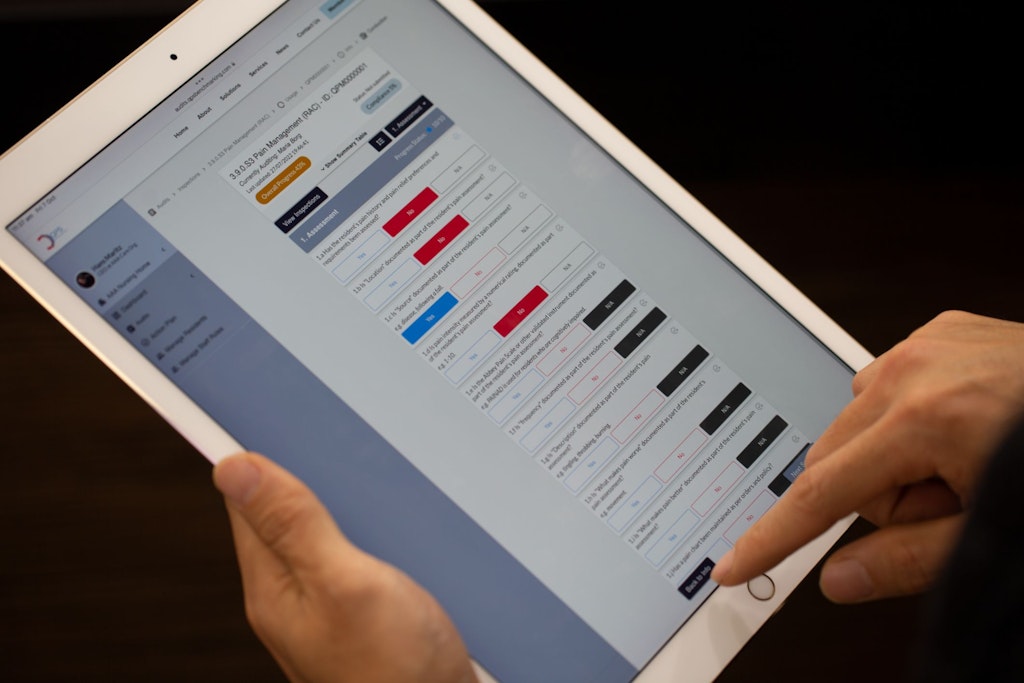Does aged care data collection require some pause and reflection?
Last updated on 6 October 2023

Having been a part of the aged care sector for over 20 years, he has not only learnt the nitty gritties of the healthcare industry, but has also become a compassionate and dedicated leader.
As a young boy, Adam Holcroft grew up in the coastal region of Wollongong in NSW, a place he describes to be very close to his heart. He pursued his Information Technology degree from the University of Wollongong in 1998 and began his professional journey with QPS Benchmarking in its infancy. Adam said it was a privilege to witness and steer the transformation of the business and was involved in the creation of an inhouse web development team which was formed to revolutionise the delivery of benchmarking services to their clients.
Adam explained that his journey into martial arts was a key factor in guiding him through his professional life. “My journey into Brazilian Jiu-Jitsu (BJJ) mirrors my professional life,” he said. “The challenge to improve and better myself drove me to compete and test my skills. With time, not only did I participate in rigorous competitions, but I also transitioned into a teaching role.”
“It’s in these classes that I resonate most with my leadership style – it’s about nurturing, guiding and setting an example. Both on the mat and in the boardroom, I’ve learned the essence of resilience, strategic thinking, and adaptability.”
So what drove Adam to apply his skills to the aged care sector?
His affinity for the elderly comes from a personal place – the deep respect and love he holds for his grandparents. “The invaluable moments I spent with my grandparents, their tales, wisdom and warmth, instilled in me a profound respect for the elderly. Their influence made me realise the pressing need for compassionate and dedicated professionals in the sector, leading me to direct my professional energies here,” he added.

Hello leaders sat down with Adam to get his insights on the implementation of the Star Ratings and the recent expansion of the National Aged Care Mandatory Quality Indicator Program (QI Program).
A jumpy start for the Star Rating System
The first two submissions of data for star ratings haven’t filled the sector with confidence.
After the first round of Star Ratings were published in December 2022 there were questions about the accuracy of the data, and the publishing of the latest round was delayed due to “an issue” in the new Government Provider Management System (GPMS) affecting some quality measures ratings available for preview.
In an attempt to fix the existing loopholes, the GPMS replaces the current 20-year old National Approved Provider System (NAPS).
The Department of Health and Aged Care has agreed to an initial two-year deal with American cloud-based software company Salesforce worth $13.5 million, according to a contract notification published in May this year. The contract, which runs through to the end of January 2025, was agreed through the DTA’s cloud marketplace.
In a webinar held earlier in the year, a representative of the Department said, “It’s a big foundational piece of work that will help to support the delivery of many of the initiatives that we’re running.”
“The new quality indicators are robust. . . there’s an impending challenge of survey fatigue. In the initial phases, aligning staff to understand and meet collection requirements was a challenge. But challenges, as I’ve always believed, are opportunities in disguise,” he said.
The benefit of the star ratings is aimed at consumers and their families so that they can make informed care decisions.
“While a 5-star rating system has its merits, I believe that important clinical measures need a more nuanced representation to consumers.”
“I do have some concern about the potential for the Star Ratings to misrepresent provider performance, however, we are only in the initial phase. I expect that with greater industry involvement, the system will evolve into one that can be effective and efficient on all sides,” he added.
QI Program – A necessity for sector growth
The QI Program was designed to provide transparency and information on the quality of care provided to residents in aged care facilities. It aimed to collect data on various quality indicators related to areas such as clinical care, medication management, and resident well-being.
“As a result of the Royal Commission into Aged Care, one of the recommendations that came out was Quality Indicators, that were to be made mandatory across the country and then a system was developed to cater to this,” said Adam.
The quality indicators refer to measurable standards and benchmarks used to assess and monitor the quality of care provided in residential aged care facilities. These indicators cover a wide spectrum of aspects, including clinical care, medication management, resident well-being and overall safety. By quantifying these elements, the QI Program offers a standardised and objective way to evaluate the performance of aged care facilities and identify areas that need improvement.

In April 2023, the Government added a further six indicators of care to the existing quality indicators. These included hospitalisation, incontinence care, workforce and quality of life among others.
But is the sector benefiting from the indicators and is the Government using the data to rectify the issues that are being highlighted in the Royal Commission into Aged Care Quality and Safety?
“The new quality indicators, especially the survey-centric ones, are robust. While the intent is to amplify voices and collect qualitative data, there’s an impending challenge of survey fatigue. In the initial phases, aligning staff to understand and meet collection requirements was a challenge.”
“But challenges, as I’ve always believed, are opportunities in disguise. They stimulate growth and demand innovation, and that’s the path we are committed to,” he said.
With increasing compliance reporting being added to the sector’s workload which is already struggling with severe staff shortages, what role do these measures play in improving the quality of aged care?
Corrective action required to reduce staff turnover
“Workforce is such an interesting thing to discuss at the moment. It’s probably one of the main subjects in this added [new] list of indicators,” said Adam. “The question I always have is looking at figures is one thing, but what can we do about figures? I think it is great to measure, to analyse, but we need some corrective actions available for the workforce,” he added.
A National Skills Commission report from earlier this year said demand for care staff would rise by over 40% over the next four years but would still not be met by enough working-aged Australians. It is expected that there will be a dearth of over 54,000 care staff members in both the aged care and the disability sectors with roughly 50,000 nursing positions vacant.
Adam concluded by saying, “The workforce domain remains a critical area in the aged care sector. Post-Covid-19, turnover rates unfortunately haven’t shown improvement. The sector faced an influx of retirements, wage-related challenges and cross-sector poaching. It’s time we revisit our strategies and prioritise the betterment of our aged care workforce.”
About QPS Benchmarking:
QPS Benchmarking provides advanced products that enable you to quickly and easily understand your performance and the performance of others in a national and international benchmarking group.
Identifying trends, comparing overheads, achieving staff involvement, discovering areas for improvement and noticing cost-reducing efficiencies has never been simpler. Easy to read graphical and numerical reports compare individual results to the industry distribution, including mean, maximums and minimums.
For more information please visit www.qpsbenchmarking.com.